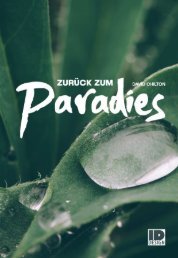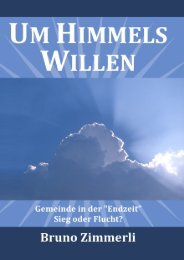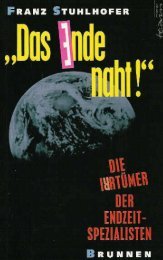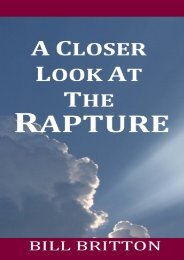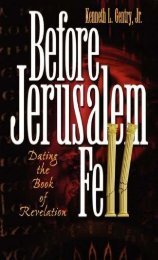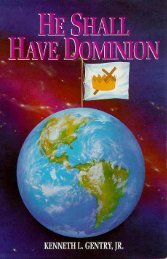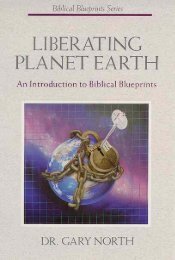Rapture Fever
by Gary North
by Gary North
Create successful ePaper yourself
Turn your PDF publications into a flip-book with our unique Google optimized e-Paper software.
50 RAPTURE FEVER<br />
ties. They did not admit to themselves the truth of what the<br />
New Testament message announced, namely, that God has no<br />
permanent pleasure in burnt animal ofjim”ngs. This had been the<br />
message of the Old Covenant, too, and their religious predecessors<br />
had paid no attention: “For I desired mercy and not sacrifice;<br />
and the knowledge of God more than burnt offerings”<br />
(Hos. 6:6). The New Testament authors declared that God<br />
would soon bring an end to these futile and misleading animal<br />
sacrifices, never to be restored.20 They understood that they were<br />
living in the last days of the Old Covenant era, and they<br />
warned their readers of this fact. This, in fact, is the primary<br />
message of the Book of Revelation.21<br />
So, the New Testament authors did write about prophecy<br />
but most (though not all) of their prophetic messages dealt with<br />
the immediate fate and fhture of national Israel. Thus, when<br />
they wrote prophetically they wrote primarily about lsraeZ’s<br />
near-term eschutology (last days), not the Church’s long-term<br />
20. Traditional dispensationalism teaches that the temple will be rebuilt and<br />
animal sacrifices will be restored for a thousand years, even though only as a “memorial:<br />
as C. I. Scofield says in his reference note on Ezekiel 43:19. Tb Scoji.sid Refwence<br />
Bible (New York Oxford University Press, 1909), p. 890. The embarrassment of<br />
the New Scojiefd Bible’s revision committee is apparent in the note that this prophecy<br />
of restored sacrifices can be explained either in terms of the “memorial” thesis (which<br />
they strategically refuse to identi$ as Scofield’s original view) or as figurative - a<br />
smrtling suggestion ffom theologians who proclaim that dispensationalism’sprinciple<br />
of interpretation is “literal whenever possible” (i.e., “literal whenever convenient”).<br />
The New .ScojleZd Bible (New York: Oxford University Press, 1967), p. 888. If the<br />
temple is to be rebuilt for use during the New Testament’s millennium-a dispensational<br />
doctrine which the revision committee did not dare to chatlenge - then for<br />
what other purpose would the temple be used except for offering animal sacrifices?<br />
AS a tourist attraction? Thus, if the rebuilt temple of Ezekiel 43 is a prophecy referring<br />
to a New Testament era millennium tather than to the rebuilt temple of Nehemiah’s<br />
day itself a prophetic symbol of worship in the worldwide Church - which is<br />
my view - then the re-establishment of animal sacrifices cannot sensibly be regarded<br />
as figurative. But the theological implications of this re-established animal sacrifice<br />
system were too embarrassing for the Scofield revision committee to handle forthrightly.<br />
They fudged.<br />
21. David Chilton, The Days of Wngeance: An Exposition of the Book of Revekztiun (Ft.<br />
Worth: Dominion Press, 1987).







